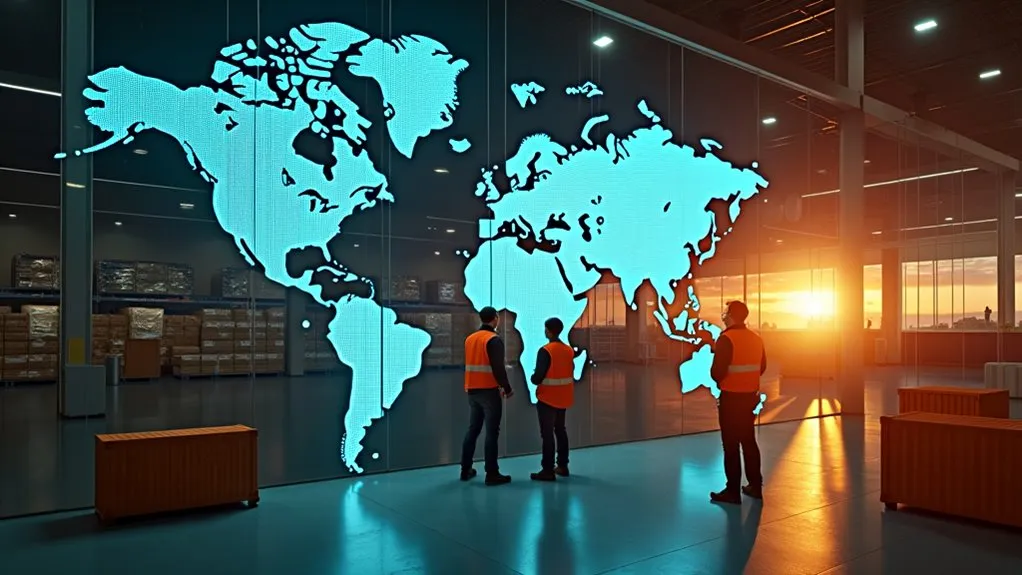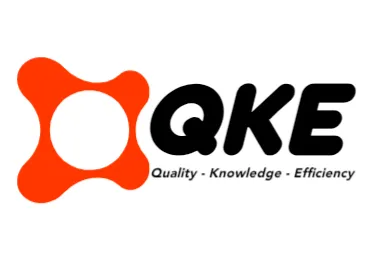Implementing global track and trace in a supply chain boosts visibility and operational efficiency. It enables real-time monitoring, reduces delays, and cuts costs through data-driven decisions. Key technologies like RFID and barcodes ensure accurate tracking, while best practices involve goal setting and stakeholder engagement. Challenges such as regulatory compliance and integration risks can be mitigated with strategic planning. The market is rapidly growing, driven by e-commerce and security needs. Explore further for deeper insights.
Key Takeaways
- Start by defining clear objectives for global track and trace aligned with business and regulatory needs.
- Integrate systems with existing ERP, MES, and WMS platforms to ensure seamless operations.
- Use key technologies like barcodes and RFID for effective real-time tracking and transparency.
- Engage stakeholders early and provide training to support successful system adoption.
- Monitor continuously and leverage IoT or blockchain to optimize data accuracy and efficiency.
Understanding the Benefits of Global Track and Trace

How can businesses ensure agility and resilience in an increasingly complex supply chain landscape? Implementing global track and trace systems offers a strategic solution by providing real-time monitoring and end-to-end transparency. A thorough Benefit Analysis reveals significant advantages: enhanced visibility identifies bottlenecks swiftly, enabling data-driven decisions that boost operational efficiency. This reduces delays, optimizes inventory, and cuts costs associated with losses or inefficiencies.
Moreover, global track and trace drives Trust Enhancement by offering stakeholders transparency into product journeys, ensuring accountability. Customers gain real-time order updates and confidence in product integrity, while businesses mitigate risks through early disruption warnings and compliance adherence. By streamlining operations and reducing uncertainty, companies fortify their supply chain resilience. The decisive adoption of such systems positions organizations to navigate complexities with precision, ensuring reliability and fostering stakeholder trust in an unpredictable global market. Additionally, these systems improve customer satisfaction by providing accurate shipping information and minimizing errors in delivery accurate shipping information.
Exploring Key Technologies for Effective Tracking
What drives the effectiveness of global track and trace systems in today’s intricate supply chains? It lies in leveraging cutting-edge technologies that ensure precision and visibility. Barcode Variations, such as 1D and 2D/QR codes, form a foundational layer, offering cost-effective identification at checkpoints. While 1D barcodes handle basic data, 2D codes store richer information, enhancing interoperability across stakeholders. However, their limitations, like line-of-sight scanning, highlight the need for advanced solutions.
Enter RFID Mechanisms, which revolutionize tracking with radio wave technology. Capable of reading multiple tags simultaneously from a distance, RFID excels in inventory and asset management, surpassing barcodes in data capacity and durability. Despite higher costs and potential interference, its strategic use alongside barcodes optimizes efficiency for high-value or bulk items. Together, these technologies create a robust framework, empowering supply chains with real-time insights and streamlined operations across global networks.
Best Practices for Successful Implementation

Implementing a global track and trace system demands a strategic approach rooted in best practices to ensure seamless integration and operational success. A critical starting point is Goal Setting, where organizations must define clear objectives aligned with business priorities and regulatory needs. This involves identifying essential data points and crafting a detailed plan for integration and training.
System Integration is equally vital, requiring the chosen solution to mesh seamlessly with existing ERP, MES, and WMS platforms. Careful planning minimizes disruptions during rollout, while mapping the supply chain highlights critical control points for monitoring. Engaging stakeholders early fosters collaboration, and standardizing data formats ensures consistency across operations. Robust training equips teams to leverage the system effectively, while continuous monitoring drives optimization. By adhering to these decisive strategies, companies can establish a resilient track and trace framework that enhances visibility and operational efficiency across the global supply chain.
Overcoming Common Challenges in Deployment

Organizations aiming to establish a robust global track and trace system must confront a range of deployment challenges that can impede progress if not addressed proactively. Among the most critical are Regulatory Barriers, which stem from diverse international compliance requirements like GDPR and FDA rules. These barriers demand substantial investment to align with varying standards, risking penalties if ignored. Strategic solutions include engaging legal experts and adopting adaptable tech platforms to navigate this complexity.
Equally pressing are Operational Risks, such as systems integration issues with legacy software and stakeholder coordination across global supply chains. Data silos and compatibility challenges can disrupt functionality, while high costs and resource allocation strain budgets. To mitigate these risks, organizations should prioritize unified platforms, phased implementations, and thorough ROI analyses. By leveraging digital tools like IoT and blockchain for data accuracy, firms can decisively overcome these hurdles and ensure deployment success.
Analyzing Market Trends and Industry Impact

How is the global track and trace market evolving within the supply chain landscape? Market Analysis reveals a robust trajectory, with the market valued at USD 6.82-6.99 billion in 2023/2024, projected to reach USD 11.66-11.9 billion by 2030/2033. This Industry Evolution is driven by stringent regulations, counterfeit concerns, and e-commerce growth, particularly in North America (37% share) and Asia-Pacific’s rising potential.
Key trends shaping this transformation include:
- Technology Dominance: Software solutions (52% share) and barcode technology (81% share) lead, while RFID shows rapid growth potential.
- Sector Impact: Pharmaceuticals hold a 25-27% share, driven by serialization mandates like DSCSA, alongside food safety and retail logistics needs.
- Core Benefits: Enhanced visibility, operational efficiency, and security against counterfeiting are critical outcomes.
Strategically, organizations must align with these trends to ensure compliance, optimize processes, and maintain competitive edge in an increasingly transparent supply chain ecosystem.

 Tiếng Việt
Tiếng Việt 日本語
日本語 中文 (中国)
中文 (中国) 한국어
한국어
